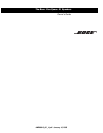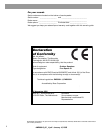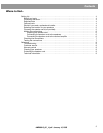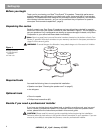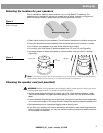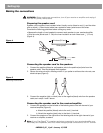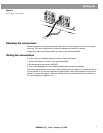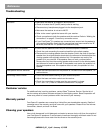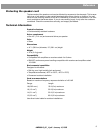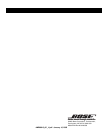
9
Reference
Protecting the speaker cord
The bare ends of the speaker cord can be affected by exposure to the elements. This is espe-
cially true of salt water or water containing chemicals such as chlorine or fertilizer. You may
use a silicone caulking material, such as RTV adhesive, to protect the connections. It is com-
monly available at hardware stores. If you do use caulking, apply it only after the cords are
connected. Check the connections annually, and reapply as needed.
Technical Information
Protective features
• Environmentally resistant hardware
Driver complement
• One 4.5" (11.4 cm) environmental driver per speaker
Color
• Green
Dimensions
• 14
1
/
2
" (36.8 cm) diameter, 15" (38.1 cm) height
Weight
• 12 lb (5.4 kg) each
Compatibility
• Compatible with amplifiers or receivers rated 4 to 8 ohms
• 50W IEC continuous power-handling compatible with receivers and amplifiers rated
10-100W
Environmental capabilities
Designed to withstand:
• Salt fog, sun, high humidity (rain and snow)
• Temperature extremes (-40°F to 158°F; -40°C to 70°C)
• Permanent outdoor installation
Cord recommendations
Based on maximum frequency response deviation of ±0.5 dB
Gauge Length
18 (0.82 mm
2
) 20 ft (6 m) maximum
16 (1.3 mm
2
) 30 ft (9 m) maximum
14 (2.1 mm
2
) 50 ft (15 m) maximum
12 (3.3 mm
2
) 80 ft (24 m) maximum
Use direct-burial cable for outdoor installations.
AM268612_00 _V.pdf • January 10, 2003



